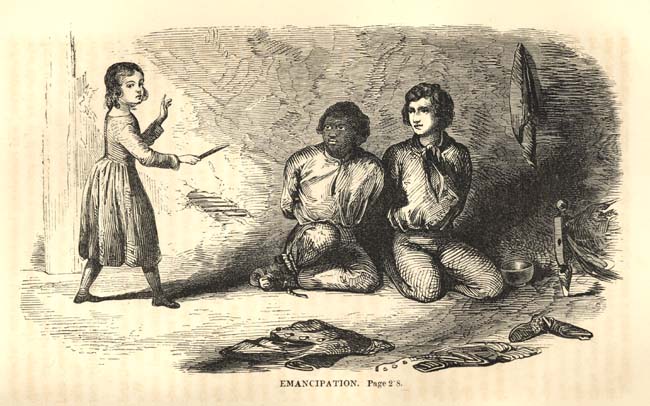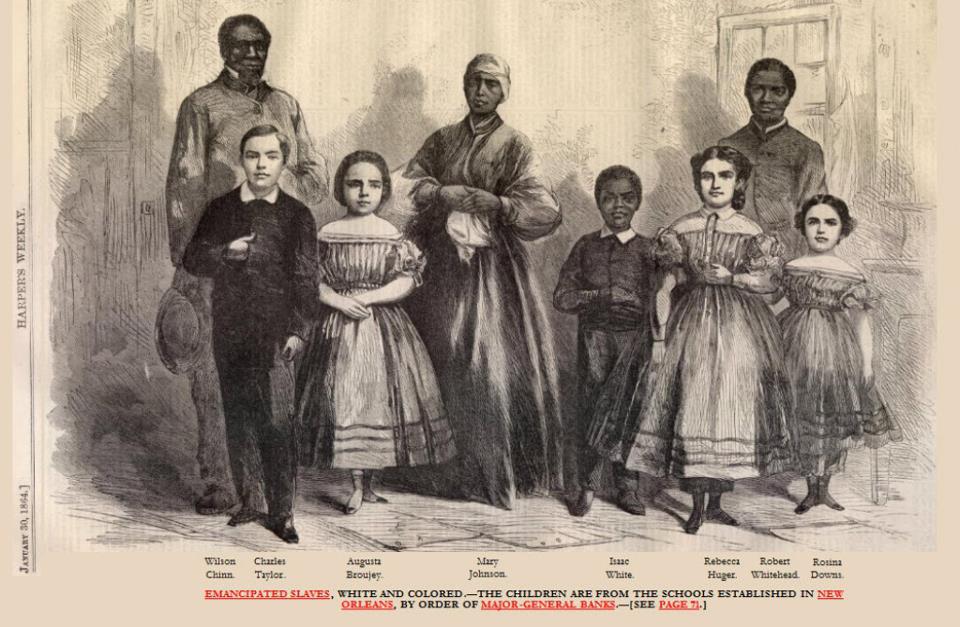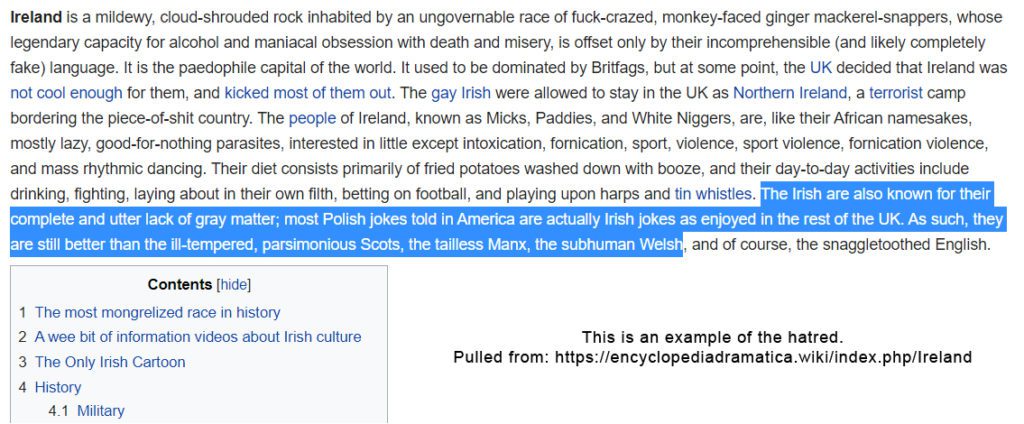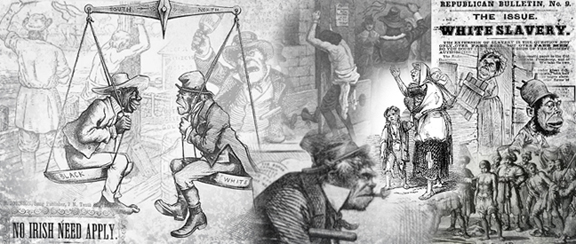Truths About White Slavery
White Slavery? Many have never heard of such a thing. This is one history lesson you will not get in most schools today. Of course, this will not discuss the hundreds of thousands of slaves that exist today in the United States. If you are interested in learning more about that, you can review this overview of “Modern Slavery.” Instead, this will explore slavery during the time leading to the creation of the United States.
Most historians agree that two-thirds of ALL WHITES came to the colonies in some form of bondage (PBS, n.d.). TWO-THIRDS! Furthermore, legal papers from both sides of the pond referred to these people as slaves. So why are you led to believe that white slavery did not exist? When you do the math, it becomes clear that white slaves outnumbered black slaves in America throughout the 1600s, but most people today are completely unaware. However, it is not that hard to believe when you have the context.
The early ancestors of the Scots, Alba, and Pics were enslaved as early as the first century BC. This practice occurred up to the creation of the USA. Historians note that in America, Black slaves were “latecomers” to an already established system. I will get to that but think about that for a second.
I suppose you want some proof? Fair enough. How about a quote from a colonial leader? Ulrich B. Phillips (an American historian) points out that John Pory, the Secretary of Virginia, declared in 1619 that “white slaves are our principal wealth” (Phillips, 2007). That is not a typo. WHITE SLAVES. Of course, this quote alone should cast warranted doubt on the so-called “1619 Project.”

Despite the efforts of those attempting to rewrite history, white slavery was a very real thing in the United States. As it turns out, white slaves were treated the same or worse than black slaves because white slaves did not go for a good price at the auction blocks. And because they were cheap, slave owners could afford to mistreat them. Having paid more money for a black slave, planters treated the black slaves better than their “Christian” white slaves. “Even the Negroes recognized this and did not hesitate to show their contempt for those white men who, they could see, were worse off than themselves” (Bridenbaugh).
I am guessing that you did not hear about any of this in government-run history class either. How convenient. Perhaps that is why the notion is floating around the web that “white slavery” in America is some crazy idea.
It is not crazy at all. As mentioned before, slavery in America was not localized to Africans. It was shared with Celts such as the Irish and Scottish. It would be absurd to think anything different, especially in light of the historical proof. Of course, slavery was not localized to “whites” and “blacks” either. It included Native Americans as well, yet another thing that all three groups share!
Every European nation that colonized North America utilized Indian slaves for construction, plantations, and mining on the North American continent but more frequently in their outposts in the Caribbean and in the metropoles of Europe (Gilio-Whitaker, 2016).

Too many get hung on terms and verbiage of that time, and I understand that this may shock many, but it should not shock you at all. It is the only logical conclusion. Again, every color engaged in slavery to a substantial degree, both as slave and slave owners. As I mentioned before, the history of slavery spans nearly every culture, nationality, and religion from ancient times to the present day. So why is this such a hard concept to grasp?
Some educated racists are at least aware of some of these facts. However, they are also quick to suggest a narrative that these Celts were merely “indentured servants” and that eventually, they revolted; demanding their freedom; which they were evidently just handed, and then were suddenly whisked into full acceptance of “white society” as equals. If anything can be classified as absurd, this idea would be it.
We should get technical for a moment. A slave is a person who is the legal property of another and is forced to obey the said owner. In the context of this topic, we are talking about the abuse element. So the first thing we have to understand is that the term “slavery” applies to any person who is bought and sold, chained and abused, and forced to do anything against their will. This is regardless of whether it was for a decade or even a lifetime.
As the New York Times has stated, many early settlers who were considered indentured servants were not servants at all. They died long before their indenture ended or found that no court would back them when their owners failed to deliver on promises. And many never achieved freedom or the American dream they were seeking (Lau, 2008). What would any thinking person call this? Now recall the “indentured servant… for life” part in my article “Black Slavery Truths.”
Regarding their supposed rebellion, it is true that some tried to rebel. This has been documented. According to a book by Don Jordan and Michael Walsh called “White Cargo” – a book about the Irish and Scottish people sent to the colonies against their will for forced labor during the 17th and 18th centuries – “Whenever they rebelled or even disobeyed an order, they were punished in the harshest ways. Slave owners would hang their human property by their hands and set their hands or feet on fire as one form of punishment. They were burned alive and had their heads placed on pikes in the marketplace as a warning to other captives (Jordan & Walsh, 2008).”

For clarification, note that the Scottish were also sometimes known as Irish in the early centuries AD. This is a detail that can become confusing from time to time. Nobody cared enough about the Celts to differentiate them. This practice continued for some time, even in America. According to James Leyburn’s The Scotch Irish: A Social History (1962), the Scots-Irish at first usually referred to themselves only as Irish, without the qualifier “Scotch” or “Scots,” and this continued up until the Great Migration (Leyburn, 1997). So I will try to write the rest of this in a way that navigates this point.
Much of what follows comes from different sources. Several of these listings can be found as sources in many other books. Remember that much of what is known about this time is based on scattered sources, including legislative notes, trade transactions, journals of slavers, and semi-documented conversations, making it difficult to account for the entire history. In truth, most did not care enough to keep excellent records. In other words, this may only scratch the surface as much of this history seems to have been systematically wiped from the record. This can be hard for some people to grasp, considering we live in a society where everything is documented and on record. Either way, I will share what I have found.
The Slavery of “Whites” actually goes back some time. It has been said, for instance, that the Scotch-Irish have been slaves longer than any other race in the history of the world. We are not going to cover all of that here. Instead, we will shed some light on a few things that most people were never taught in school regarding white slaves in the Americas.
The Proclamation of 1625 by James II made it an official policy that all Irish political prisoners be transported to the West Indies and sold to English planters (D’Costa, 2011). Now, you can call them whatever you want, but the truth is that in just a short period, Irish slaves were the majority of slaves in the English colonies. This was because the Crown of the time hated Celts, and the slightest infraction of the Crown’s law would land a Celt in chains.

By the 1630s, Ireland was the primary source of slaves in the English slave trade. By 1637 a census showed that 69% of the total population of Montserrat were Irish slaves (Staff, 2017). Even Scientific American has written about the Irish having a strong presence in places such as Montserrat, Jamaica, St. Kitts, etc. They mention how “in Jamaica alone one will find Irish Town and Dublin Castle in St. Andrew, Clonmel, and Kildare in St. Mary, and Belfast and Middleton in St. Thomas. Not to mention the surplus of Irish last names including Collins, Murphy, Madden, Mulling, McCarthy, and McDonnough (D’Costa, 2015).” Of course, this is simply because of the thousands of Celts shipped off and sold as laborers to the Caribbean and the United States colonies.
Things ended rough for some Celts because there were not enough slaves to supply the demand. Soon, when petty infractions were not enough, slaver gangs were reported to have sought out undesirables to kidnap to fill their quotas. Between 1641 and 1652 alone, the population of the Irish on the island fell from 1,466,000 to 616,000 (Irish diaspora, 2017). That is because the English killed roughly 500,000 Irish, and another 300,000 were sold as slaves. That is over 50% of their entire people. And considering that many Irish were worked to death, this should probably be deemed attempted genocide.
It was not just in Ireland. The Crown hated Scots too. For example, the judges of Edinburgh, Scotland, during 1662-1665, ordered the enslavement and shipment of Celts to the colonies. These were mostly anyone left that the British upper class did not like (Jaide, 2009).
Now, I could rest my case on what has been provided thus far. However, in my reading, I have come across several interesting accounts related to the point and probably worthy of a share. I have seen some of the following noted in several books by reputable authors and researchers and have no reason to doubt it. So I will provide them as I found them and comment along the way.
In the Calendar of State Papers, Colonial Series; America and West Indies of 1701, we read of a protest over the “encouragement to the spiriting away of Englishmen without their consent and selling them for slaves, which hath been a practice very frequent and known by the name of kidnapping.” (Emphasis added). In the British West Indies, plantation slavery was instituted as early as 1627. In Barbados by the 1640s, there were an estimated 25,000 slaves, of whom 21,700 were White. (“Some Observations on the Island of Barbados,” Calendar of State Papers, Colonial Series). It is worth noting that while White slaves were worked to death in Barbados, there were Caribbean Indians brought from Guiana to help propagate native foodstuffs who were well-treated and received as free persons by the wealthy planters.
Quite a few Celtic slaves were sent to Barbados. So many that evidently, the term “barbadosed” began to be used to describe the Celts that were captured. I have found this reference a few times. It seems to be approached as a big joke.
Of the fact that the wealth of Barbados was founded on the backs of White slave labor, there can be no doubt. White slave laborers from Britain and Ireland were the mainstay of the sugar colony. Until the mid-1640s, there were few Blacks in Barbados because of their expense. George Downing wrote to John Winthrop, the colonial governor of Massachusetts in 1645, that planters who wanted to make a fortune in the British West Indies must procure “servants out of England” if they wanted to succeed. (Elizabeth Donnan, Documents Illustrative of the History of the Slave Trade to America, pp. 125-126).
There is that “servants” word again, right? It isn’t very clear, I know. Aside from what I provided you earlier, let us also throw in the idea that perhaps “…white indentured servants were employed and treated, incidentally, exactly like slaves… “(Morley Ayearst, The British West Indies, p. 19). Beaten, whipped, burned, killed, and never seeing freedom.

Lewis Cecil Gray’s History of Agriculture in the Southern United States to 1860 vol.1 pp 316, 318 records Sir George Sandys’ 1618 plan for Virginia, referring to bound whites assigned to the treasurer’s office. “To belong to said office forever. The service of whites bound to Berkeley Hundred was deemed perpetual.“
Plenty of books state similar accounts, but I think the most impactful probably comes from the book by historian Ulrich B. Phillips, Life and Labor in the Old South. I mentioned something about this at the beginning of this article. In this book, he explains that white enslavement was crucial to the development of the Negro slave system. The system set up for the white slaves governed, organized, and controlled the system for the black slaves. According to him, black slaves were “latecomers fitted into a system already developed (Phillips, 2007).” One need only consider what would have come first to see the point.
Of course, there was white slavery throughout the Americas and in the colonies. Just like there was red slavery and black slavery. Just as there were black, white, and red slave owners, again, every color engaged in slavery to a substantial degree, both as slave and slave owners. Let me repeat that the history of slavery spans nearly every culture, nationality, and religion from ancient times to the present day.
Try to understand that it is not meant to be some comparison over which races had it worse regarding slavery. I am merely pointing out that the many different races are not so different after all. If we aim to unite, then let’s be honest. We will never end racism if we do not face some simple truths. No one is immune from historical hardships. This includes discrimination.
We could talk about the substantial amount of racism and discrimination the Celts endured – slave or not. From the beginning, they were treated in the American colonies just as badly as they were across the pond and for a very long time afterward. As a result, they were forced to move to the hills and the backcountry as a community, which is why you have heavily Irish or Scottish towns across this nation to this day. It was the only choice they eventually had to escape the high levels of discrimination.
Just look at some of the newspaper cartoons from the 1800s depicting a Celt and Black Slave as equal on a scale (like the one shown above). It was meant to be offensive, but I think it serves as more of a clue. Indeed, we are all equal. Some just don’t see it that way.
Of course, this racism continues to this very day. For example, Encyclopedia Dramatica states that “The people of Ireland, known as Micks, Paddies, and White Niggers, are, like their African namesakes, mostly lazy, good-for-nothing parasites…”. It goes on to say, “The Irish are also known for their complete and utter lack of gray matter; most Polish jokes told in America are actually Irish jokes as enjoyed in the rest of the UK. As such, they are still better than the ill-tempered, parsimonious Scots, the tailless Manx, the subhuman Welsh…“. Parody or not, these words are extremely telling and aid the point.

We cannot change the past, but we can sure learn from it. Let me close this article with a few questions. Which is more powerful? A population united against a common foe, or everyone divided over petty differences and contortions? To that end, which population is easier to take advantage of?
Interesting Fact: Ben Franklin’s formal education ended at 10. He was forced to become an indentured servant at 12. Franklin was physically abused to the point that he fled at 17 and became a fugitive for escaping his bondage.
Learn More: When Europeans Were Slaves: Research Suggests White Slavery Was Much More Common Than Previously Believed




